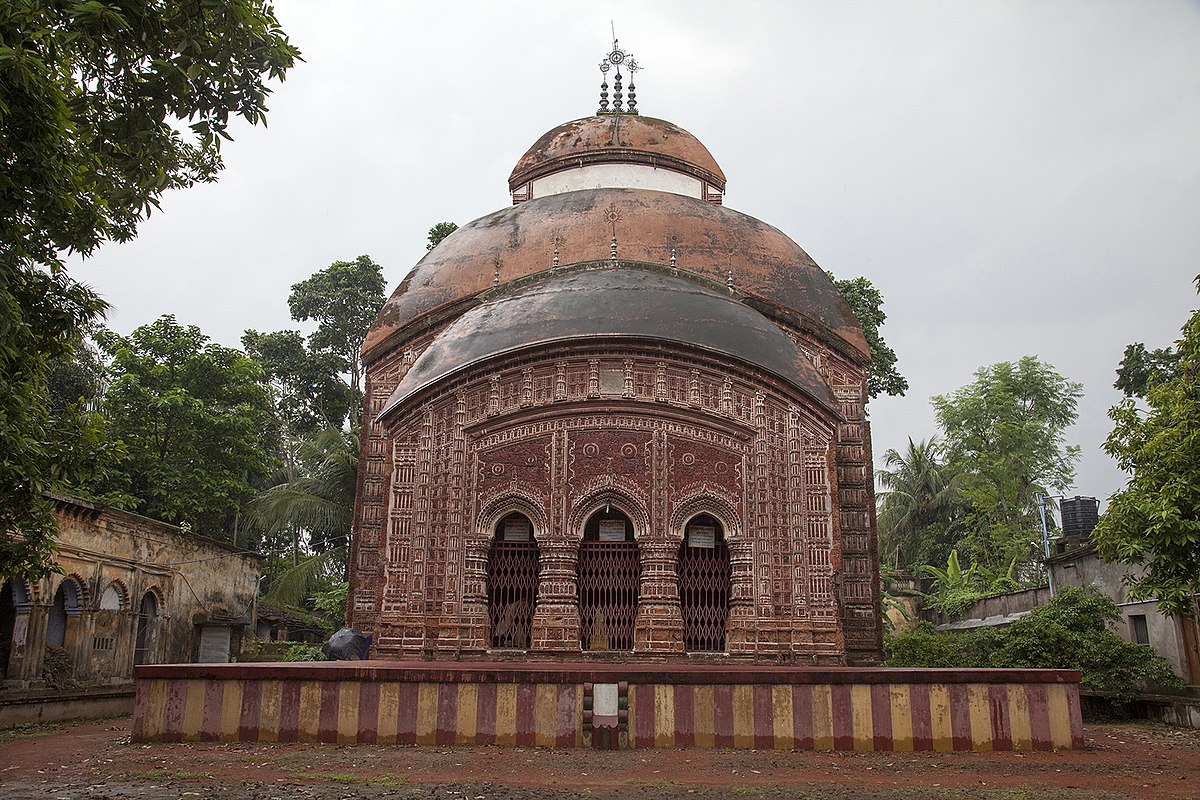Temple 2021
Introduction
I, hopefully, presume all my readers of Unveil. Press had enjoyed the first part of this story, “Rajbalhat: Iconic temple of 13th Century and remembrances of adorable Bengali Brahmins king”, published on January 26, 2021 (link given at the end).
At the end of my story, I wrote that I kept Dwarhatta’s exquisite temple, Mitra family’s Radha Govinda temple, and Antpur Ramakrishna Math stories in reserve for some other day.
Today I very much wish to complete that unfinished story. So here I go further:
From Rajbalhat, we (son Saikat and me) proceeded to the Radha Govinda temple of Antpur. At the main gate of the temple complex, we met a local youth Sudip Mitra with good knowledge about the temple. So in a way, you can also call Sudip is a local guide. So Sudip agreed to accompany us.

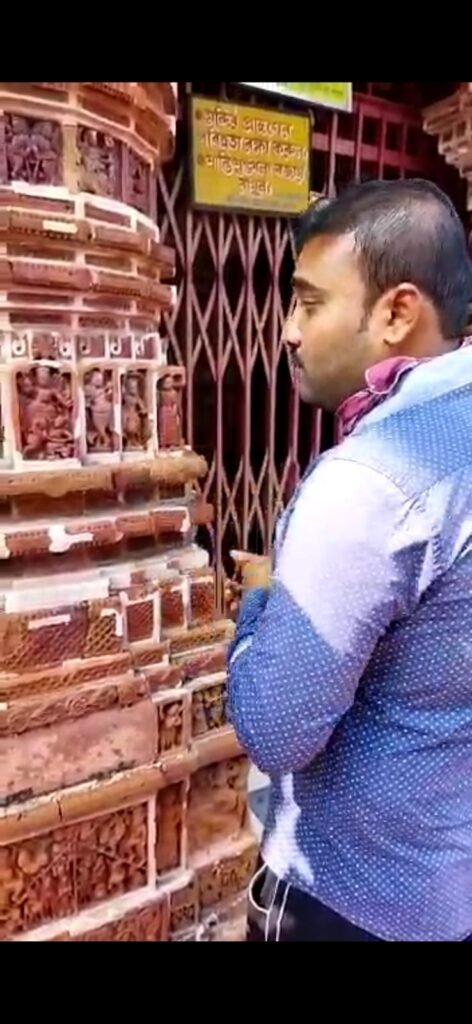
Radha Govinda Temple

Radha Govinda temple:
The one that needs a special mention in the artwork of the Mitra dynasty of Antpur is the colossal walled Radha Govinda temple built by Krishnaram Mitra in 1786 AD. The temple is 70 feet tall and maybe highest in the Hooghly district and probably Bengal. However, I don’t even know much about Bishnupur’s terracotta temple.
“The temple is made of the Gangas soil and Ganges river water. The necessary water and mud were brought from the Ganges in cattle carts to construct the temple. The entire temple wall is decorated with terracotta”, Sudip said while entering the temple premises with us.
The Diwan of Burdwan Krishnaram Mitra made this temple. At that time, the king of Burdwan was Tilak Raj Mehtab. The temple was made when Muslim rule was in its last phase, and the British government was rising in India. As a result, its effect has also appeared on the artworks of the temple
Story of Radha Govinda temple
Sudip narrated a fascinating tale about the Radha Govind temple.
Krishnaram Mitra was in his teenage at that time. A monk gave him an idol of Radhakrishna and asked him to establish a temple. A Surprised, Krishnaram Mitra said to the monk (a sanyasi) that he was unemployed and did not have the money to build a temple.
Then the sannyasi said, predicting his future, that he would earn a lot of wealth one day and establish the temple. So Krishna Mitra kept the idol given to him by the sannyasi in a box. So he kept waiting for the day when he would get wealth according to the blessings of the sanyasi.
In the moving wheel of the time, the matter moved ahead. Sanyashi’s words proved to be true. Krishnaram Mitra was appointed as the Diwan of the King of Burdwan one day. On the strength of his hard work and intellect, he emerged as a well-known Diwan of Burdawan.
Sanyasi met him one day and said that now he had become prosperous and asked to build a temple of Radha Krishna.
Conflicts of tradition:
But a problem arose. Krishnaram Mitra belonged to the Mitra dynasty, which followed Shakta tradition. The deities of the Shakta were the goddess of power like Durga, Kali and later accepted Shaivism (Shiva). But Radhakrishna is for Vaisnava followers (The Vaishnavite tradition is known for the loving devotion to an avatar of Vishnu (often Krishna) and as such was key to the spread of the Bhakti movement: Source/Courtesy: Wikipedia)
How the people of the Shakta sect would accept the deity of Vaishnava tradition was a question that kept Krishnaram Mitra worried. However, he had already given words to the sannyasi.
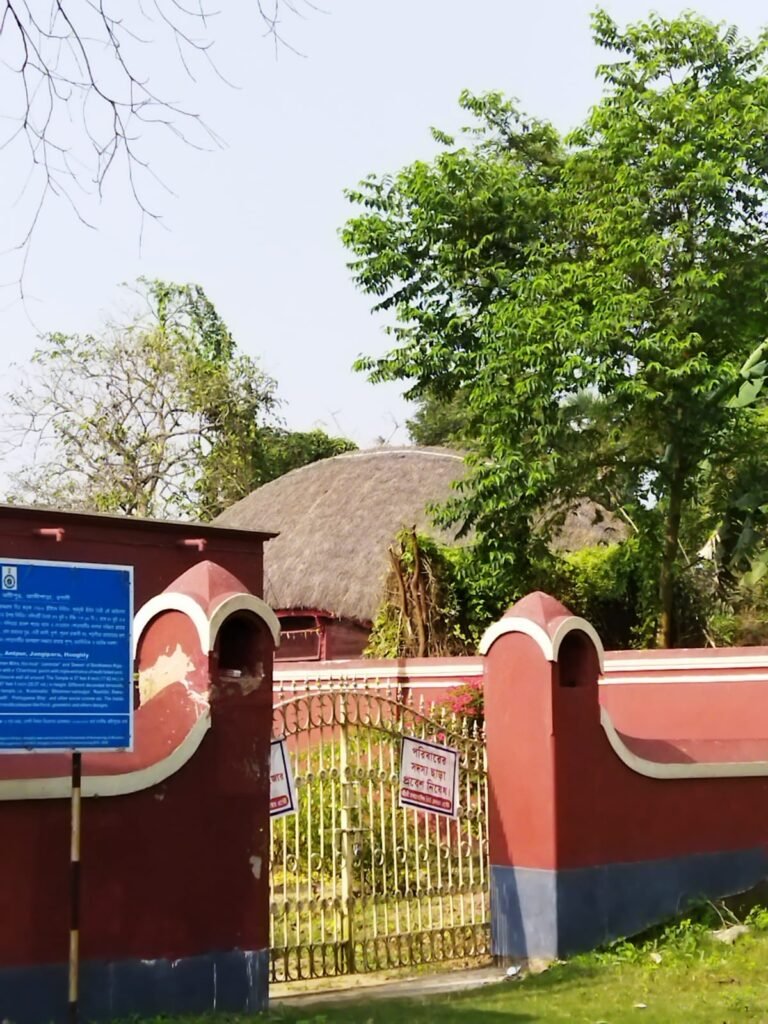
Resolving of the conflicts:
Showing his sharp intellect, Krishnaram solved this puzzle. In the Durgamandap, he made a thatched roof supported by logs of the jackfruit tree. He thus sculpted a Chandimandap with a thatched roof and did craftmanship. He made idols of Radhakrishna, local deities, Gautam Buddha, Nanak, Mother Merry with Jesus, etc. He thus created an image of united concept world religions. In this way, he showed generosity towards religious consideration. As a result, the Shakta sect accepted Krishnaram Mitra’s broad view. Finally, in 1786 the Radha Govinda temple came up here.
Description of Radha Govind Temple
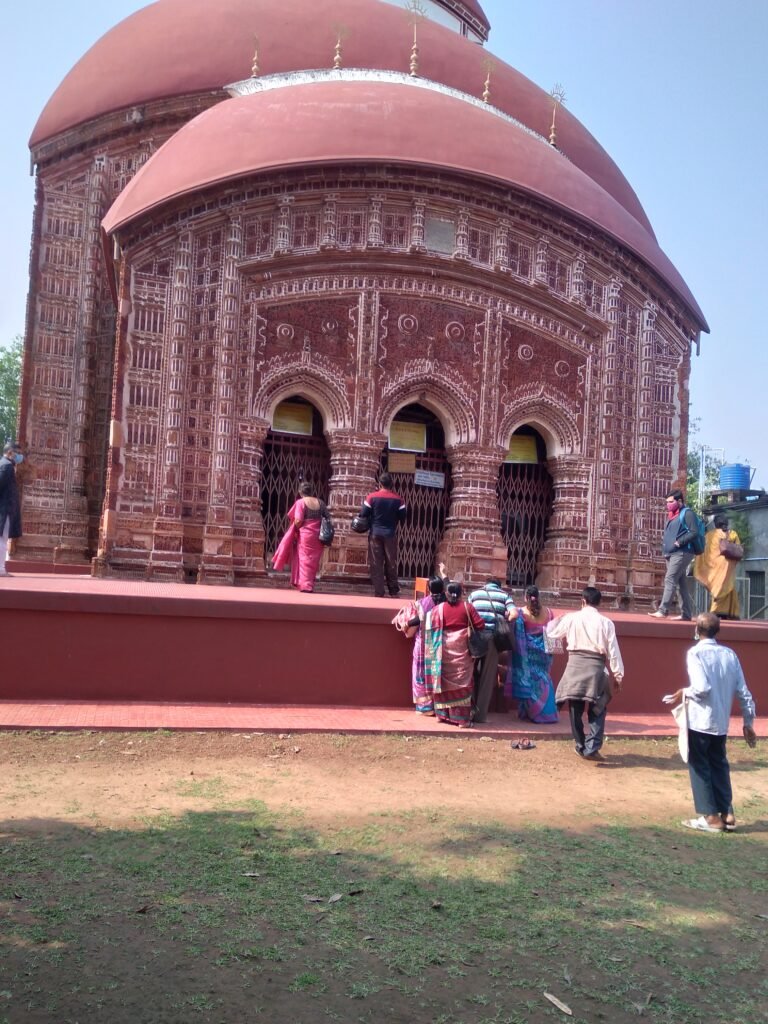
There are 108 types of lotuses inside the temple. You will get a glimpse of the three famous civilizations of the world here. The temple’s interior adorned with terracotta flowers shows the architecture of Babylonian culture. Unfortunately, we could not take photos because of the prevention of photography inside the temple.
But you can see the symbol of Egyptian culture in the form of Pharaoh in the temple’s outer wall. (Pharaoh: The ruler of ancient Egypt. The Egyptians believed their Pharaoh to be a mediator between the God and the world of men. Source/Courtesy: Encyclopedia Britannica and Merriam Webster).
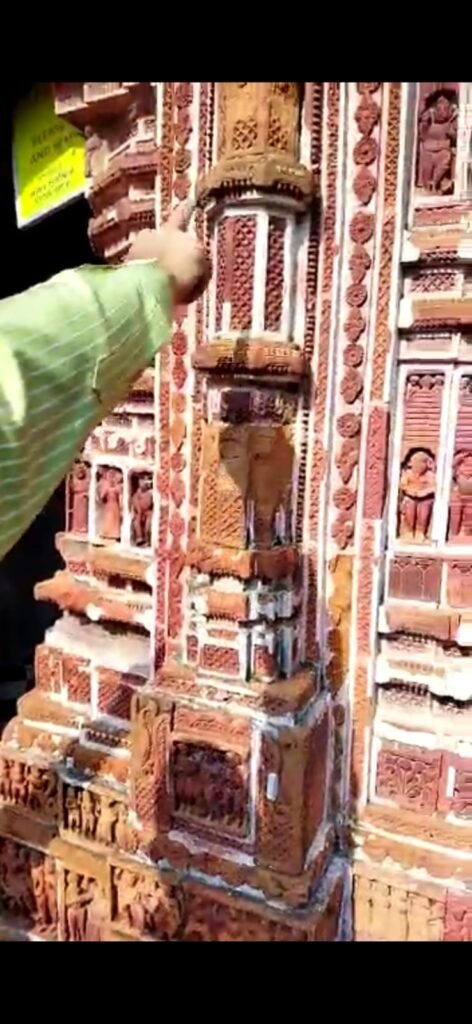
“The temple is also a miniature of Buland Darwaza and the Rajasthani-style door. The top of the wall has terracotta images of Goddess Durga and Kali. At the same time, in the middle part, you can see in terracotta Mughal emperor Babar with Zafri’s system work (Muslim artifact). The social picture of the prevailing time also has a reflection on terracotta. Thus, there will be no exaggeration if we call Krishnaram’s Mitra’s Radha Govinda Mandir a multireligious community temple”, said Sudip. Justifying his point, Sudip showed us some unique terracotta art as an example.
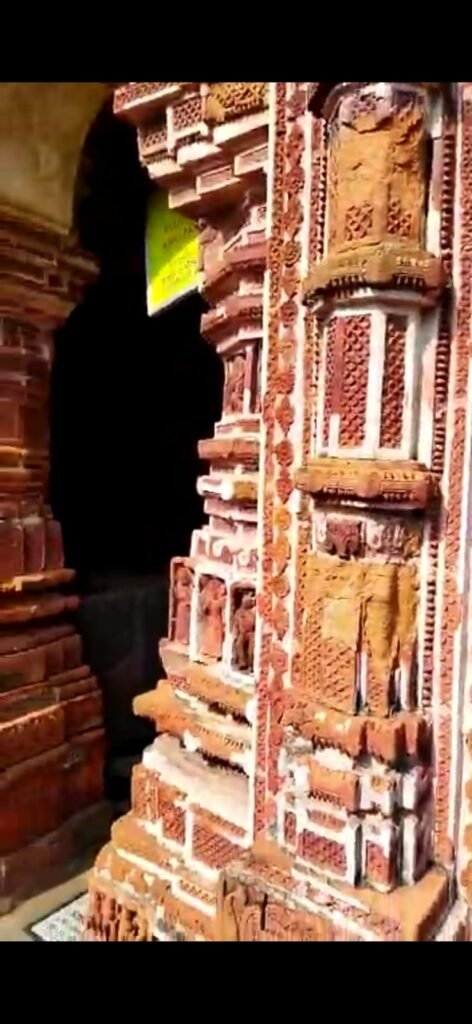
Adjacent to the Mandir, you may see a pink-walled building. It was a treasury home (Khajanchi Bhawan).
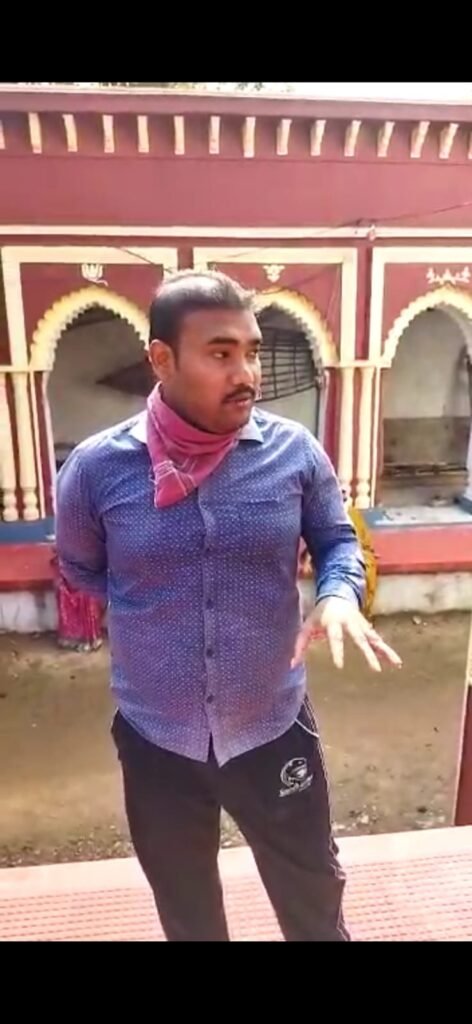
The ‘Bakul’ tree on the premises is five hundred years old. “A recent tornado uprooted the Bakul tree,” informed Sudip. “Gadadhar (later Ramakrishna Paramhansa) at that time was an 18 years youth. He sat under this Bakul tree in 1854 when he was going from Digambar Mitra’s Jhamapukur house to Antpur. In Antpur, he visited Kaliprasanna Mitra’s house. Kaliprasaana was the uncle of Premanada Swamy (alias Baburam Ghosh),” said Sudip while describing the temple.
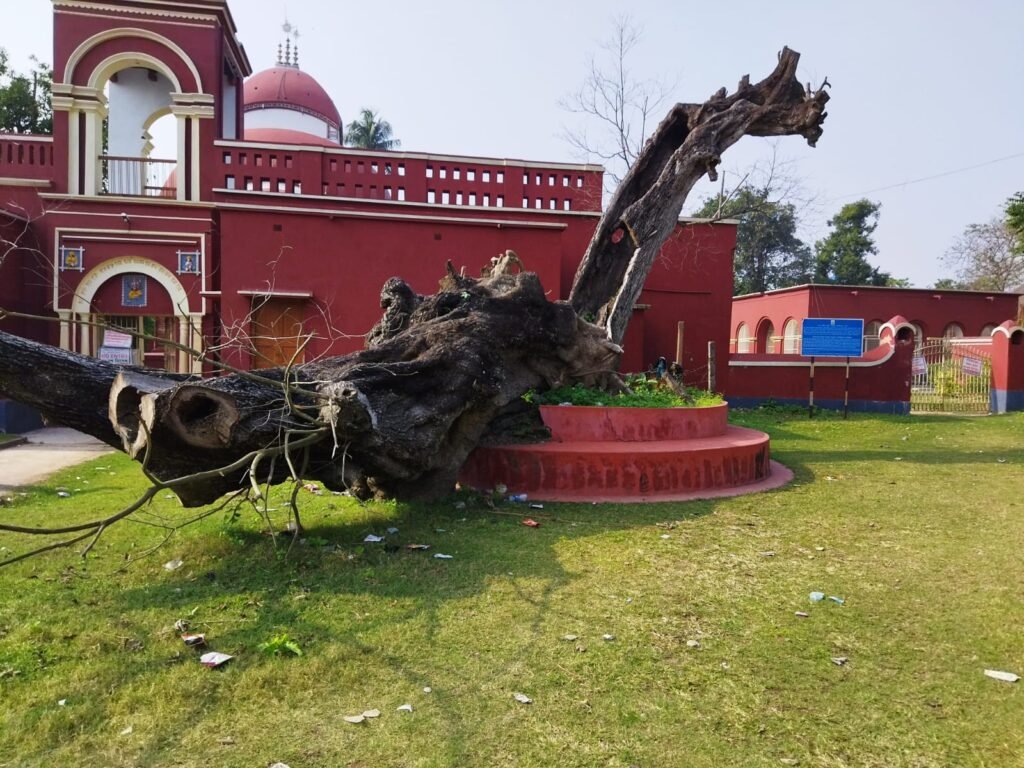
When he came here from the Konnagar, Krishnaram’s grandfather, Kandarpa Mitra, built the Durga Mandap. Kandarpa Mitra introduced Durga Puja and Kalipuja here in 1683 by building a Durgamandap. “Celebration of Durga Puja is flawlessly going on here for the past 340 years,” said Sudip.
The eye-catching Chandimandap is kept closed for the general public. However, it opens for the general public on the occasion of Durga Puja and Kali Puja.
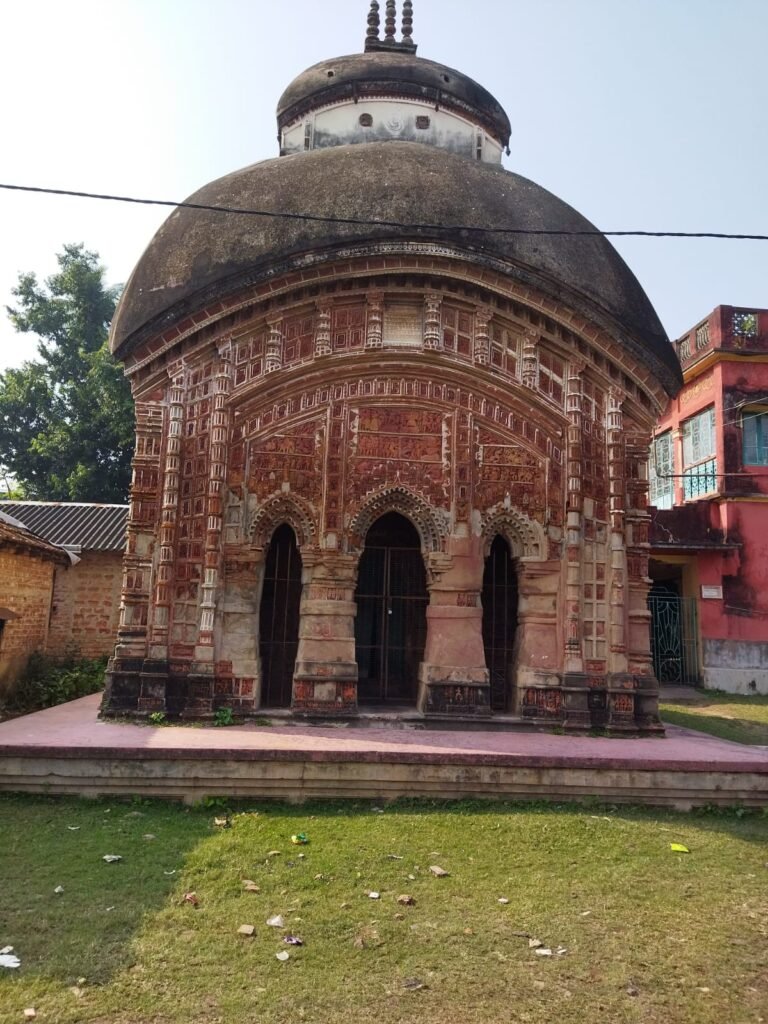


There are five Shiva Mandir in the outer courtyard of the Radha-Govinda temple. Shiva is worshiped in five forms: Gangadhar, Baneswar, Jaleswar, Phuleswar, Rameswar. “The Shiva born near water; hence Jaleswar, The one born near a flower, is called Phooleshwar. But these all are only beliefs”, Sudip said smilingly. The construction of all these temples started in 1747 and ended in 1774. In those days, the cost incurred for these five Shiva temples was two lakh rupees
Giving out further details, Sudip said that Albert Hall in England has a portrait of Radha Govinda temple and Chandimandap.

Undoubtedly, this temple made by Mitra’s family attracts tourists. Therefore, it is expected from the government that this place should be called a tourist spot. Therefore, having a government guide is essential.
Present Status of Mitra’s dynasty
I could not hide my curiosity by seeing a small residence adjoining the temple. On being asked, Sudip said that the house does not belong to the original Mitra dynasty who had to build the Radha Govind temple. “Some member of that Mitra family lives on the house another side of the nearby pond,” said Sudip.
But most of the Mitra family live in Kolkata and outside. But many of them come here for Durga Puja and family gatherings. “By the way, the ancestral home of Mitra dynasty is today’s Antpur’s Ramkrishna Math,” added Sudip.
Visit to Ramakrishna Math Antpur:
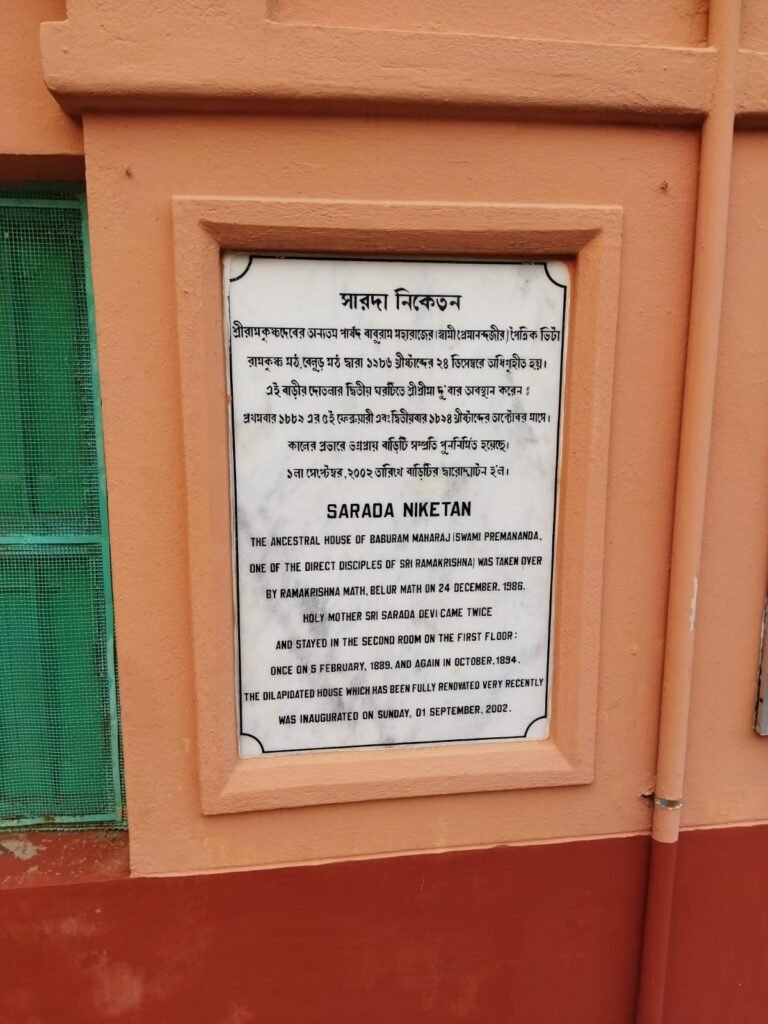
Aatpur Ramkrishna mission
Situated very close to the Radha Govinda Mandir, filled with Swami Vivekananda and Sharda Mata memories, is Durga Bari of Swamy Premanada (alias Baburam Ghosh). It is now called Ramkrishna Math Antpur.
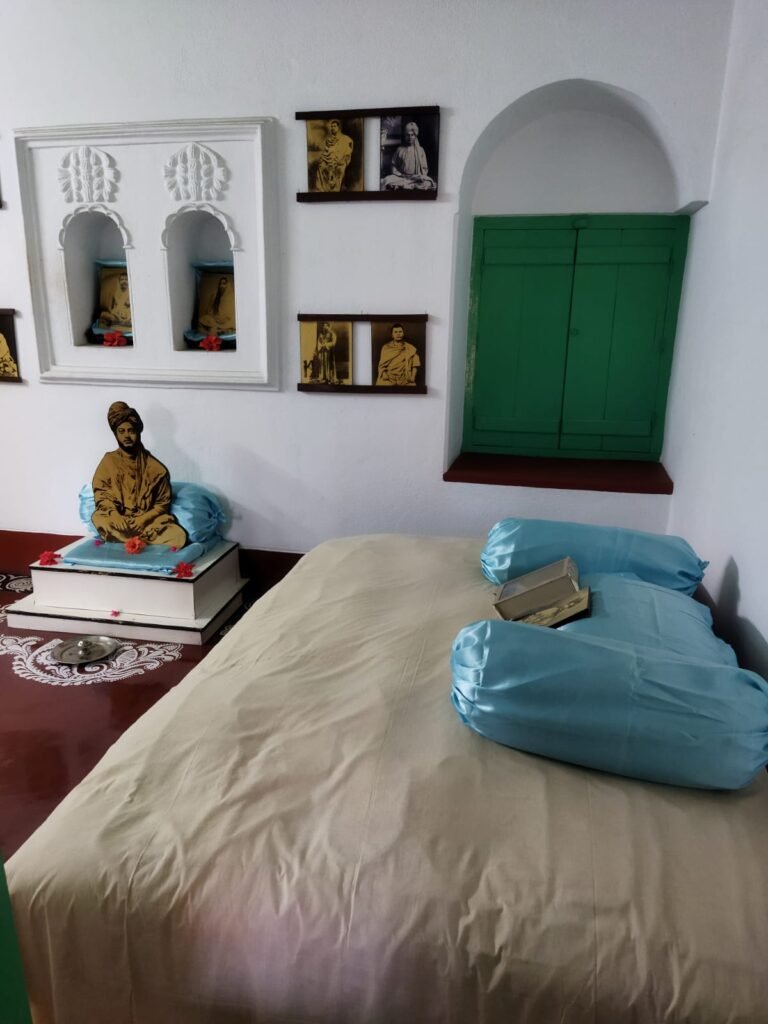
Swami Premanada (Baburam Ghosh) was born in the Mitra family of Antapur. His mother, Matangini Devi, was a daughter of the Mitra family of Antpur. In this ancestral home of Baburam Ghosh, Narendra Nath (Swamy Vivekananda) and some disciples of Ramkrishnadev came on December 24, 1886, at the request of Matangini Devi.
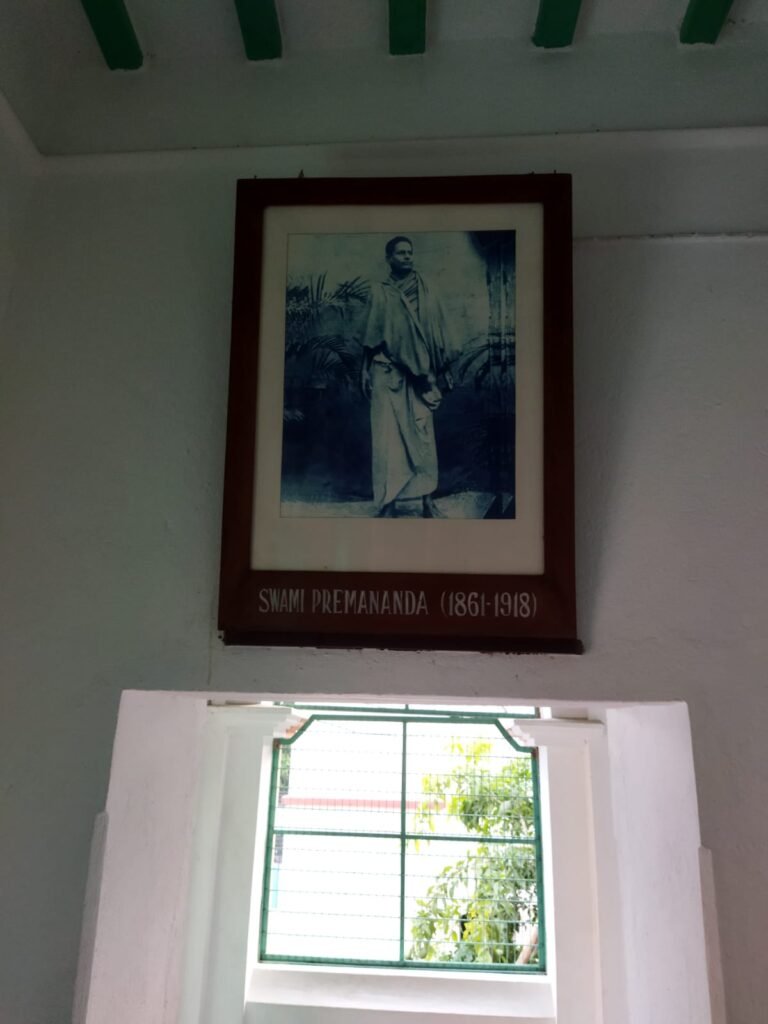
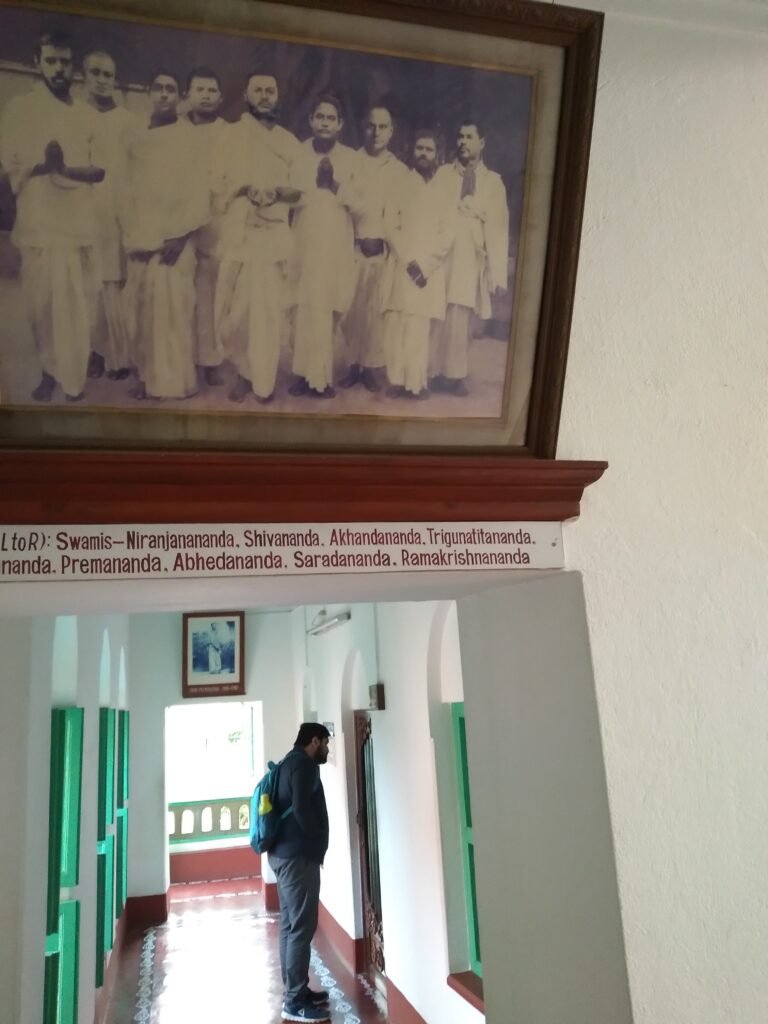
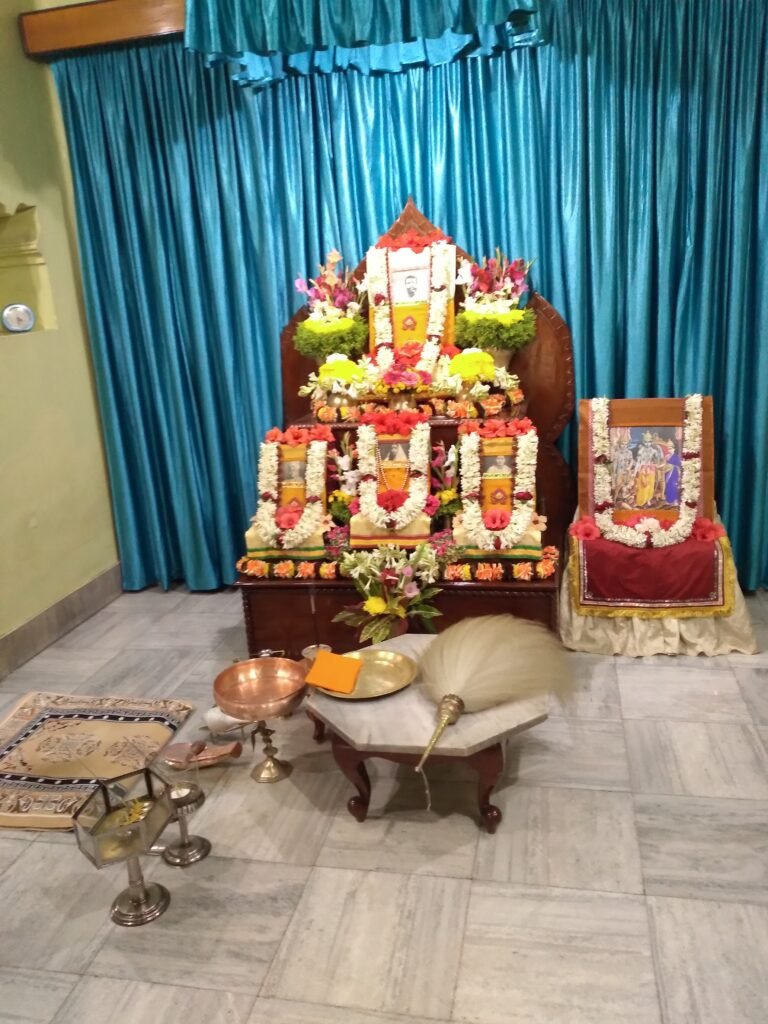
On December 24, nine disciples of Ramakrishnadev, including Vivekananda, Premananda, Ramkrishnananda, Krishnananda, Shivananda, Bhabananda, Akhandananda, Niranjannanda, Trigunatitannanda, vowed to live the life of monks.
Visit to Dwarhatta temple: Rajrajeswari Mandir
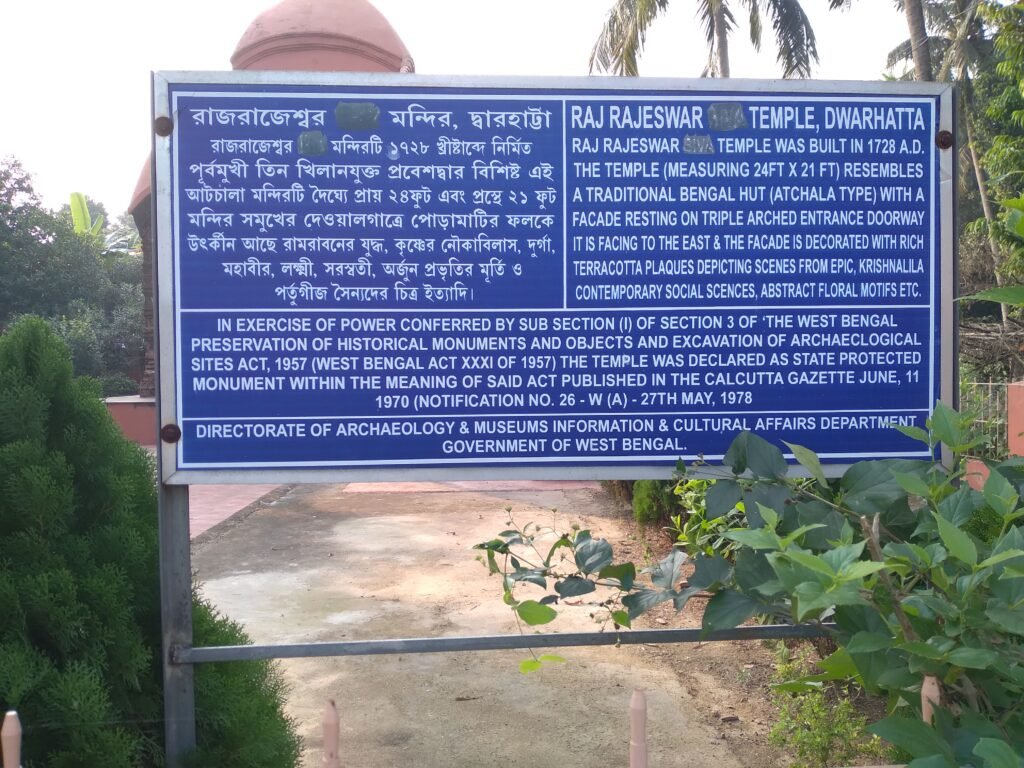
The village Dwarbhatta is situated in the beauty of verdant nature located in the Haripal block of Hooghly district of West Bengal. The coldness in the air and calmness of nature touched my heart as I stepped into terracotta decorated Rajrajeswar temple here. Seeing this temple full of beautiful artwork of five hundred years in front of my eyes, I was immersed in the thought of how unique the technical science of ancient times was.
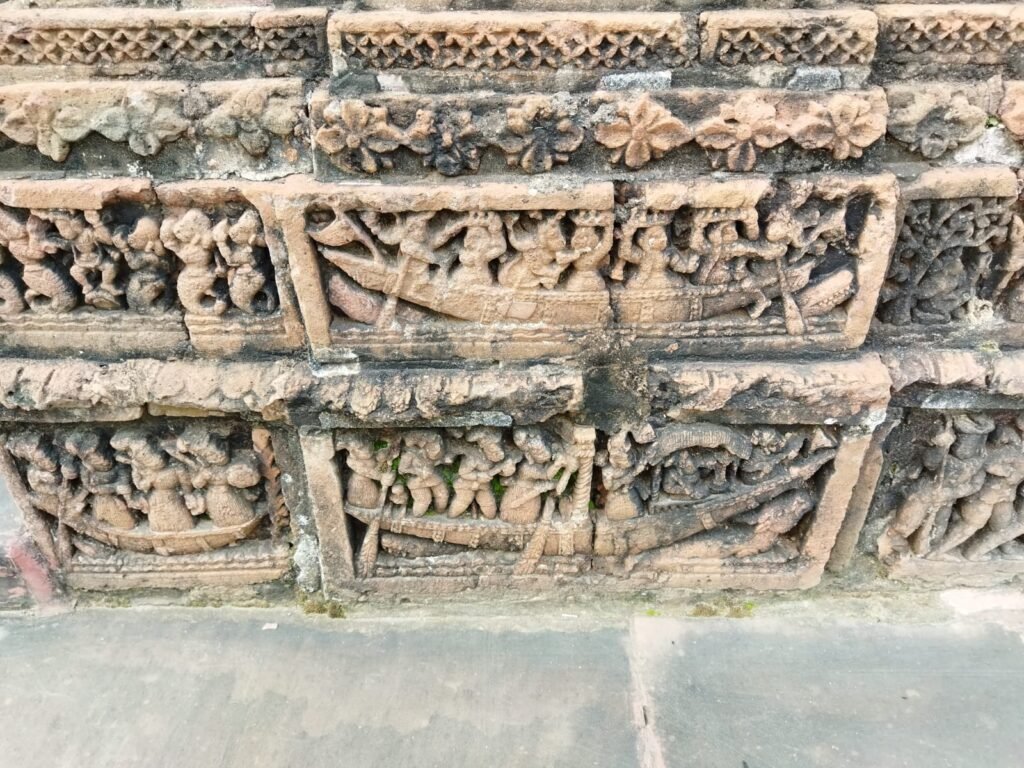
This Mandir was constructed by Pannalal Singha Rai more than 500 years ago. Although much of the terracotta has been damaged, whatever has been terracotta here reflects the legend of the Ram-Ravana war, Durga Kali, and the prevailing social picture.
When our Unveil. Press team reached Rajrajeswari Mandir; it came across Annasree Singha Rai of the Singha Ray family. Annasree is the daughter of the Singha Ray family.
Annashree says that the entire Singha Ray family lived together under one roof once. But time has changed. The ancestral house was partitioned, updated,/modernized.
The traditional Durga puja of the Singha Rai family continues. Every year responsibility for puja and other family ceremonies falls on a particular family on a rotation basis.
“But most of the members of our Singha Rai family live here. And those who live outside, definitely reach here in Durga Puja or any family get-together. My grandfather was in a government job. He had a transfer job. But after the retirement from the job, they got settled here. The attraction of the soil of your home is something unique. This Dwarhatta is a very charming place for every family member. Here we have peace and love, said Angha in a pleasant voice.
We have seen that many well-known Zamindari families have been disintegrated, and one of the leading causes is many of the family members have settled either abroad or far-flung places for reasons of varying degrees. In fact, on this tour itself, we visited another Zamindar Shil family of Rajbalhat. Though the family is maintaining their traditional temple, it misses the charm of the togetherness of the Zamindar family as most of them drifted away from their ancestral home for various reasons, said an old lady of the Shil family when Unveil. Press team interacted with them. But the family is ancient and prosperous as told to us by locals.
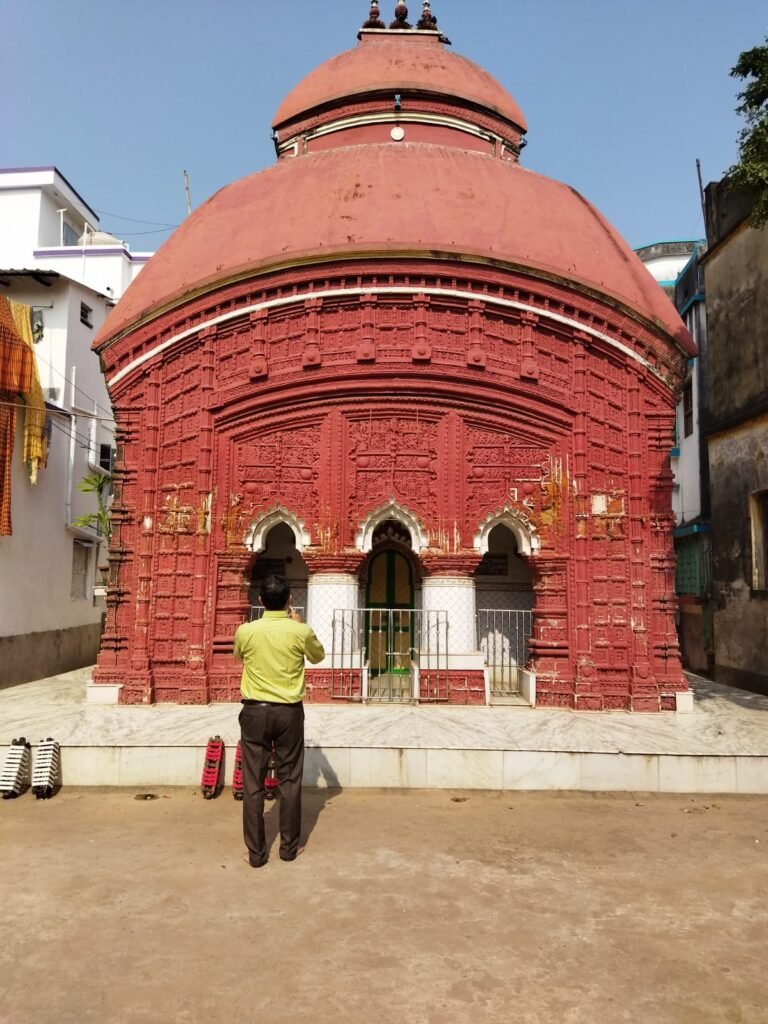
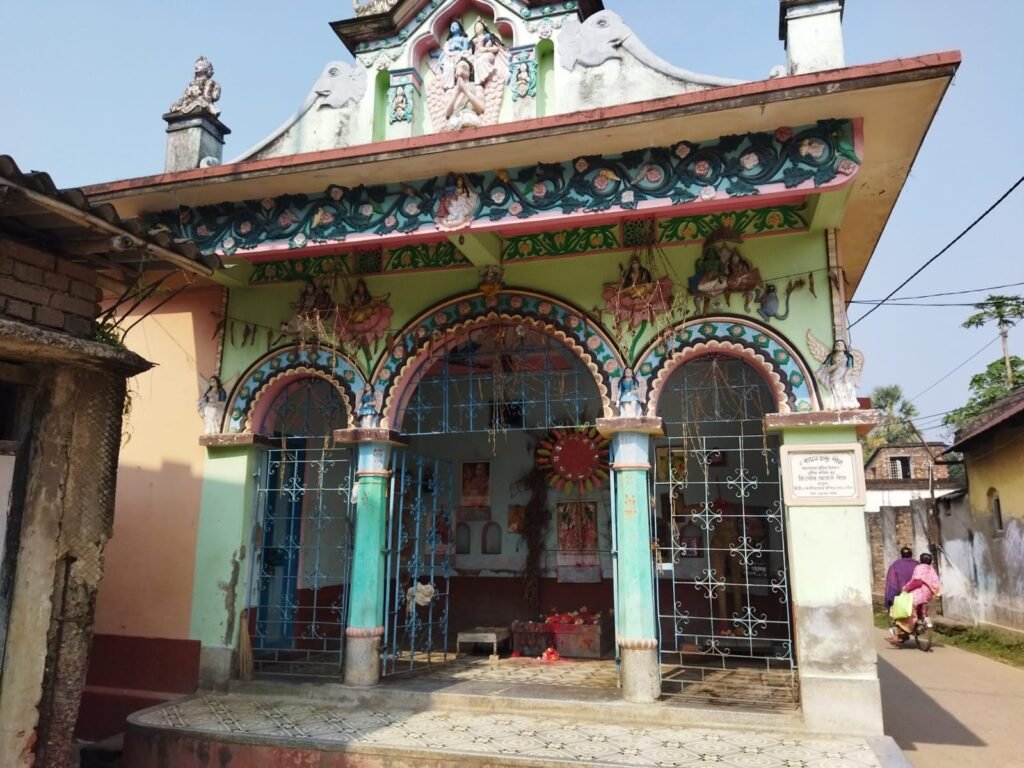
Conclusion
The evening was setting in. It was getting dark, and the cold was getting worse. So despite not wanting, we had to start our journey towards home. However, overall, the tour of Rajbalhat, Dwarhata & Ramkrishna Math Antpur remains a memorable part of my life.
The link of part-I of the story is:
https://www.unveil.press/rajbalhat-iconic-temple-of-13th-century/





































